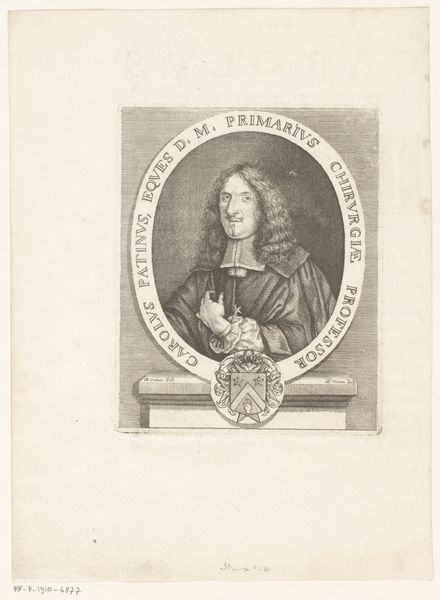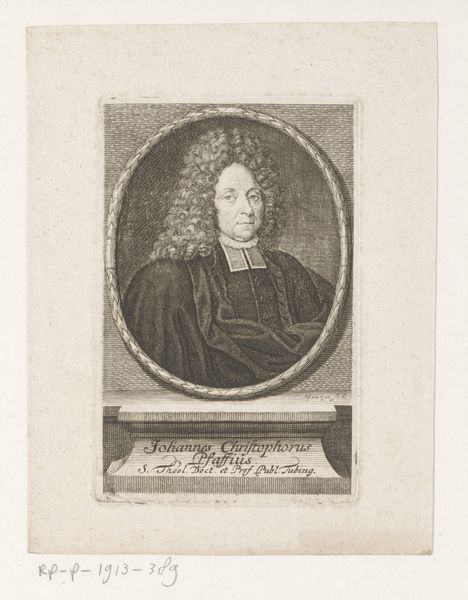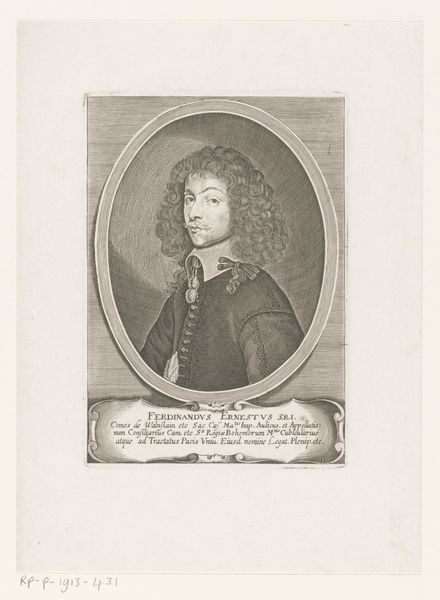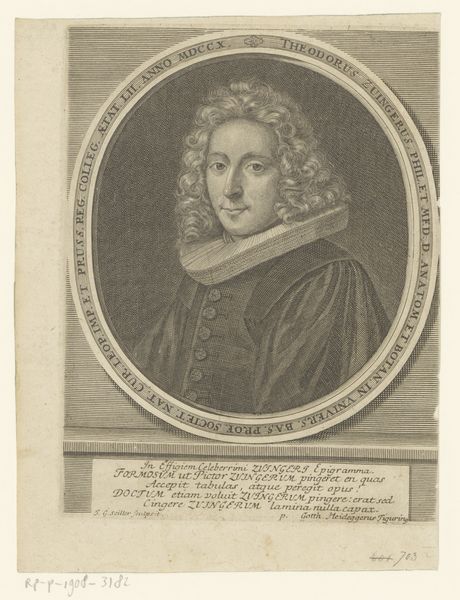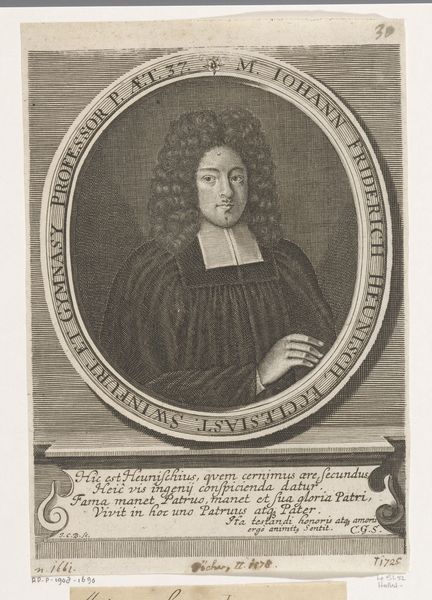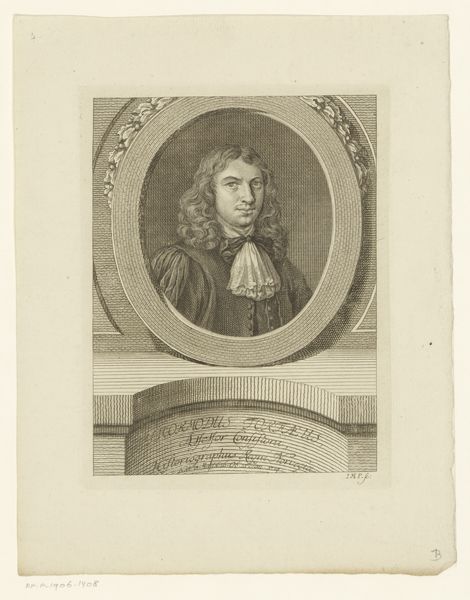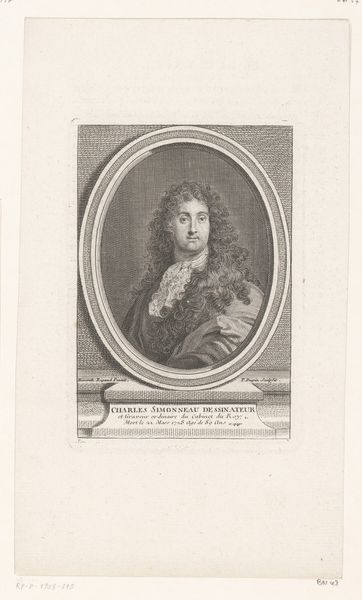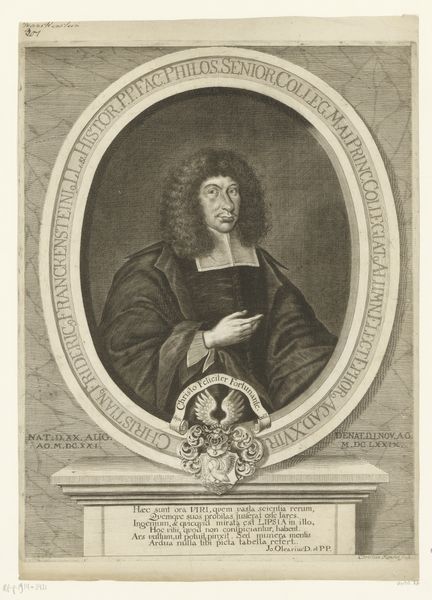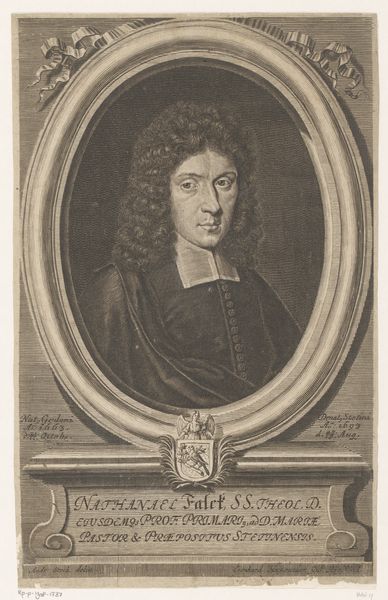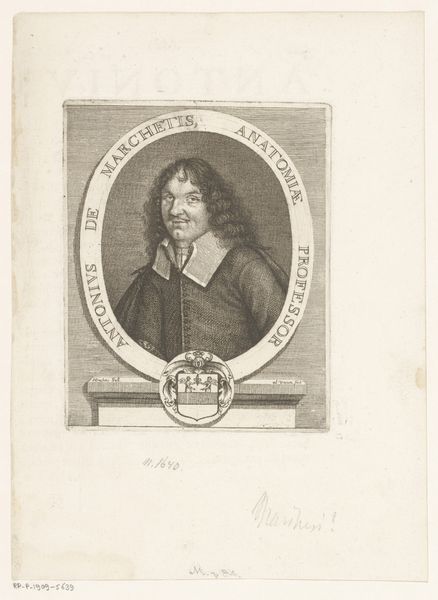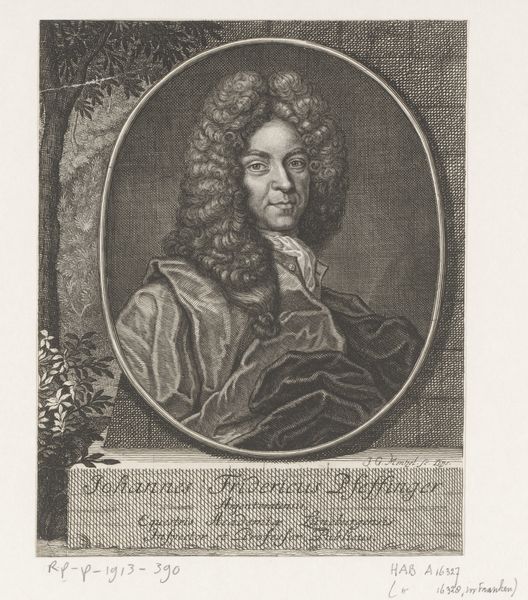
#
pencil drawn
#
photo of handprinted image
#
aged paper
#
light pencil work
#
photo restoration
#
old engraving style
#
archive photography
#
personal sketchbook
#
historical photography
#
old-timey
Dimensions: height 133 mm, width 108 mm
Copyright: Rijks Museum: Open Domain
Curator: I'm struck by the incredible detail in this print. The textures, the fine lines... it’s remarkable. Editor: Yes, indeed. This is a portrait of Giacomo Pighi, created in 1682 by Martial Desbois. The piece exemplifies the techniques of engraving during the Baroque period. Note the inclusion of lettering framing the sitter in a visually interesting oval form. Curator: You know, what interests me is the material. This isn’t some grand oil painting; it’s an engraving, a print. That automatically democratizes the image, making it more accessible to a wider audience. Editor: Absolutely. Printmaking in this era played a critical role in disseminating knowledge and constructing identities. Portraits like these weren’t just about likeness; they were about conveying status and projecting an image to the world, and how a professor such as Pighi wished to be perceived. Curator: And the act of engraving itself... the labor involved in creating those precise lines, the careful control needed. It really highlights the value placed on craftsmanship at the time. It's interesting to see the crest or seal included at the bottom; what can you tell me about this inclusion? Editor: These type of heraldic emblems are important, as the sitters included them for assertions of heritage. This symbol helped connect Pighi to elite intellectual circles within which he would have moved in 17th-century Verona. Curator: Looking at it now, you almost get a sense of Pighi’s personality. Maybe it’s just projection, but there's a certain…seriousness in his gaze? Editor: I agree. Think about where this portrait may have been displayed: a library, a study, or even circulated amongst his peers. It’s an image intended to communicate erudition, and civic engagement, but also, power. Curator: So, what starts as a seemingly simple portrait actually unfolds into a complex interplay of materials, production, and social meaning. I find that utterly compelling. Editor: Precisely. Examining the intersection of art and social function really shows how artworks have the potential to resonate far beyond their original context.
Comments
No comments
Be the first to comment and join the conversation on the ultimate creative platform.

